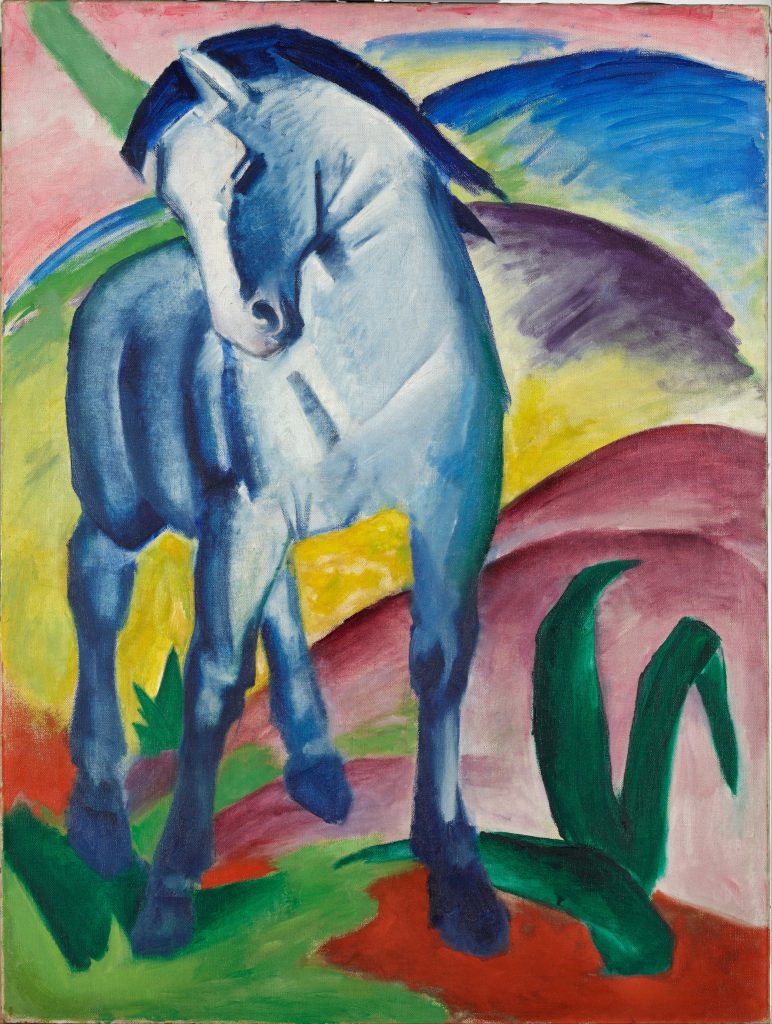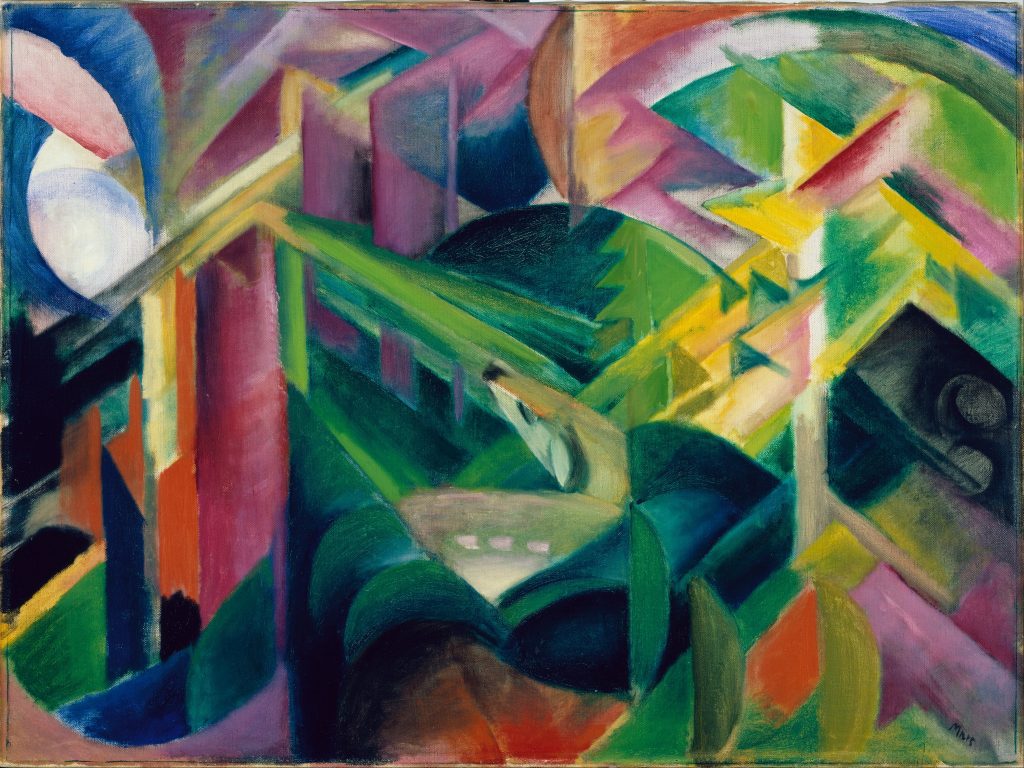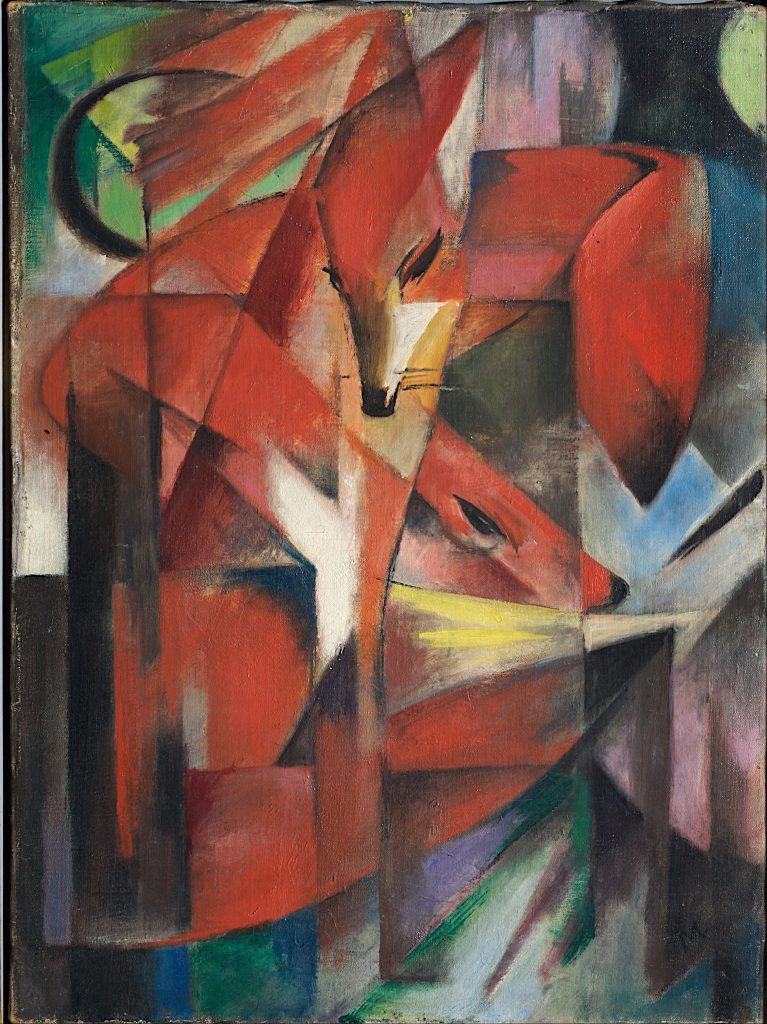Franz Marc
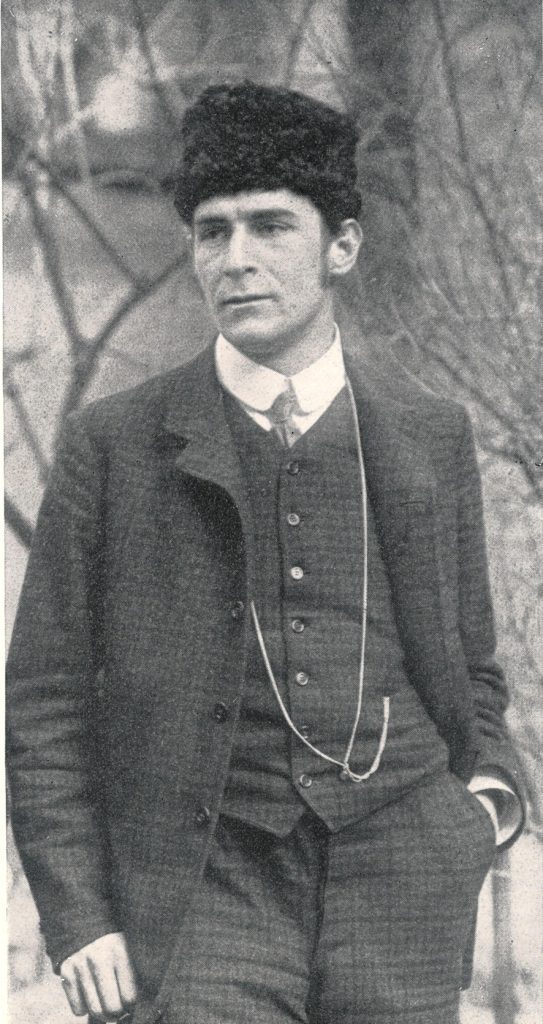
Franz Moritz Wilhelm Marc (8 February 1880 – 4 March 1916) was a German painter and printmaker, one of the key figures of German Expressionism. He was a founding member of Der Blaue Reiter (The Blue Rider), a journal whose name later became synonymous with the circle of artists collaborating in it.
His mature works mostly depict animals, and are known for bright colouration. One of the key figures of German Expressionism fascinated by futurism and cubism, Marc created art that increasingly was stark in nature, painting natural abstract forms which found spiritual value in colour
In the 1930s, the Nazis named him a degenerate artist as part of their suppression of modern art. However, most of his work survived World War II, securing his legacy. His work is now exhibited in many eminent galleries and museums. When up for auction, his major paintings attract large sums, with a record of £12,340,500
Early life
Franz Marc was born in 1880 in Munich, the then capital of the Kingdom of Bavaria. His father, Wilhelm Marc, was a professional landscape painter; his mother, Sophie, was a homemaker and a devout, socially liberal Calvinist. At the age of 17 Marc wanted to study theology, as his older brother Paul had. Two years later, however, he enrolled in the arts program of Munich University. He was first required to serve in the military for a year, after which, in 1900, he began studies instead at the Academy of Fine Arts, Munich, where his teachers included Gabriel von Hackl and Wilhelm von Diez. In 1903 and 1907, he spent time in France, particularly in Paris, visiting the museums in the city and copying many paintings, a traditional way for artists to study and develop technique. In Paris, Marc frequented artistic circles, meeting numerous artists and the actress Sarah Bernhardt. He discovered a strong affinity for the work of painter Vincent van Gogh. After the 1903 trip, he ceased attending the Academy of Fine Arts.
During his 20s, Marc was involved in a number of stormy relationships, including an affair lasting for many years with Annette Von Eckardt, a married antique dealer nine years his senior. He married twice, first to Marie Schnür, then to Maria Franck; both were artists.
In 1906, Marc travelled with his elder brother Paul, a Byzantine expert, to Thessaloniki, Mount Athos, and various other Greek locations. A few years later, in 1910, Marc developed an important friendship with the artist August Macke. In 1910 Marc painted Nude with Cat and Grazing Horses, and showed works in the second exhibition of the Neue Künstlervereinigung (New Artists’ Association, of which Marc was briefly a member) at the Thannhauser Galleries in Munich.
Der Blaue Reiter
In 1911, Marc founded the Der Blaue Reiter journal, which became the center of an artist circle, along with Macke, Wassily Kandinsky, and others who had decided to split off from the Neue Künstlervereinigung movement. Though Marc showed several of his works in the first Der Blaue Reiter exhibition at the Thannhauser Galleries in Munich between December 1911 and January 1912, as it was the apex of the German expressionist movement, the exhibit also showed in Berlin, Cologne, Hagen, and Frankfurt. In 1912, Marc met Robert Delaunay, whose use of color and the futurist method was a major influence on Marc’s work; fascinated by futurism and cubism, Marc created art that increasingly was stark in nature, painting natural abstract forms which found spiritual value in colour. He painted The Tiger and Red Deer in 1912 and The Tower of Blue Horses, Foxes, and Fate of the Animals in 1913.
Wartime
The military person’s estate of Franz Marc on display in a museum. He was killed at the Battle of Verdun
With the outbreak of World War I in 1914, Marc was drafted into the Imperial German Army as a cavalryman. By February 1916, as shown in a letter to his wife, he had gravitated to military camouflage. His technique for hiding artillery from aerial observation was to paint canvas covers in broadly pointillist style. He took pleasure in creating a series of nine such tarpaulin covers in styles varying “from Manet to Kandinsky”, suspecting that the latter could be the most effective against aircraft flying at 2,000 metres (6,600 ft) or higher.
After mobilization of the German Army, the government identified notable artists to be withdrawn from combat for their own safety. Marc was on the list but was struck in the head and killed instantly by a shell splinter during the Battle of Verdun in 1916 before orders for reassignment could reach him.
Style
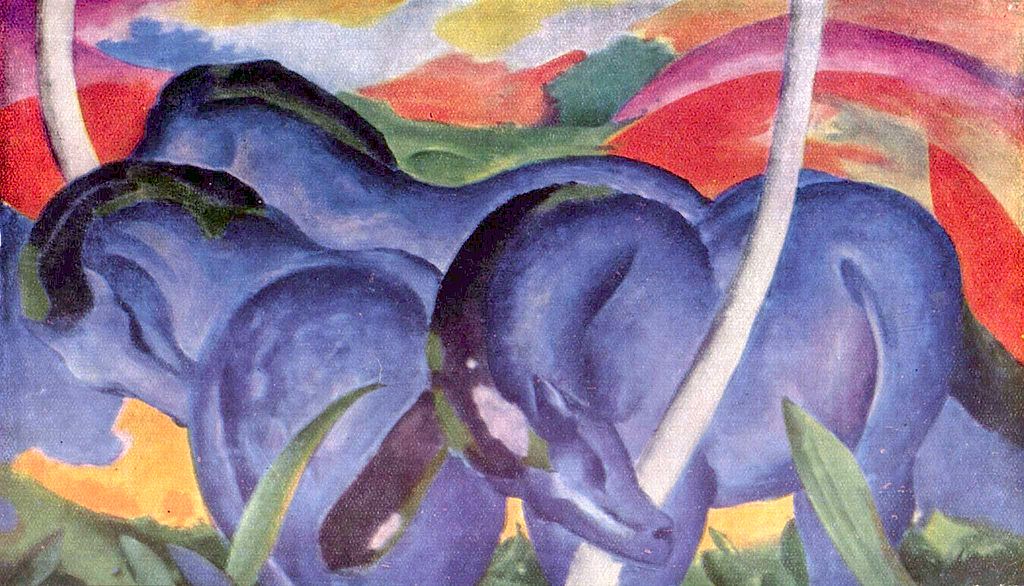
Marc made some sixty prints in woodcut and lithography. Most of his mature work portrays animals, usually in natural settings. His work is characterized by bright primary colour, an almost cubist portrayal of animals, stark simplicity and a profound sense of emotion. Even in his own time, his work attracted notice in influential circles. Marc gave an emotional meaning or purpose to the colours he used in his work: blue was used to portray masculinity and spirituality, yellow represented feminine joy, and red encased the sound of violence.
After the National Socialists took power, they suppressed modern art; in 1936 and 1937, the Nazis condemned the late Marc as an entarteter Künstler (degenerate artist) and ordered approximately 130 of his works removed from exhibition in German museums. The Blue Horses was auctioned off at the infamous Theodor Fischer gallery “degenerate art” sale in Lucerne, on 29 June 1939, and acquired by the Musée des Beaux-Arts in Liège. His painting Landscape With Horses was discovered in 2012 along with more than a thousand other paintings, in the Munich apartment of Cornelius Gurlitt whose father, Hildebrand Gurlitt, was one of Hitler’s four official art dealers of Modernist art the Nazis called “degenerate” which the Nazis sold or traded to raise cash for the Third Reich.
In 2017, Marc’s painting The Foxes (1913), which hung in Düsseldorf’s Kunstpalast was the object of Nazi era claim by the family of Kurt Grawi, a German Jewish banker who had owned the painting before the Nazis rose to power. Forced to sell some of his paintings well below value in a “Jew auction” at the Leo Spik auction house in Berlin in 1937,’The Foxes’ was not amongst them. It ended up in the hands of an Ernest Simon, a German-Jewish businessman, in New York in 1940. Grawi was arrested on Kristallnacht and incarcerated in Sachsenhausen concentration camp in 1938, before he managed to flee to Chile in 1939.
One of Marc’s best-known paintings is Tierschicksale (Animal Destinies or Fate of the Animals), which hangs in the Kunstmuseum Basel. Marc had completed the work in 1913, when “the tension of impending cataclysm had pervaded society”, as one art historian noted. On the rear of the canvas, Marc wrote, “Und Alles Sein ist flammend Leid” (“And all being is flaming agony”). Serving in World War I, Marc wrote to his wife about the painting, “[it] is like a premonition of this war – horrible and shattering. I can hardly conceive that I painted it.”


